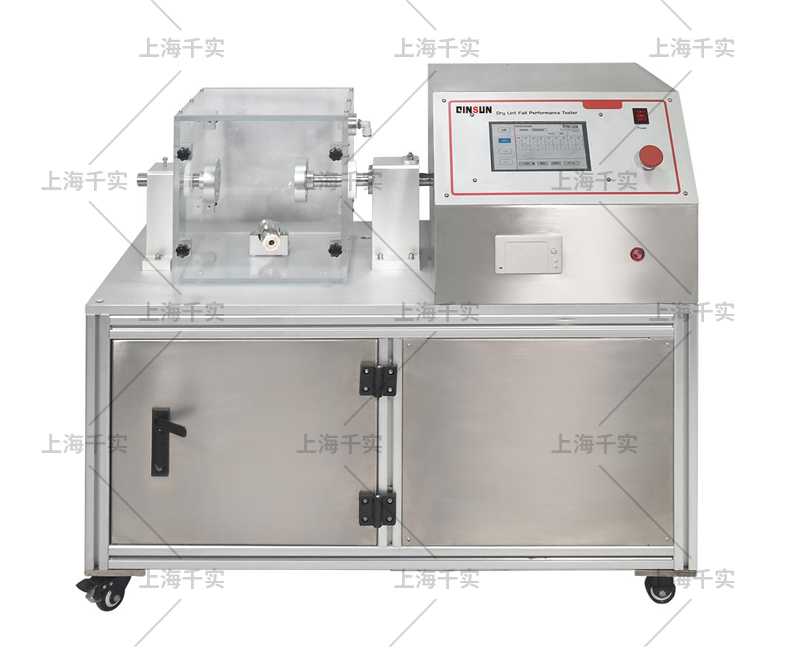Dry Fallen Wadding Tester G275: Technical Overview, Applications, and Standards
The Dry Fallen Wadding Tester G275 is a specialized instrument designed to evaluate the flammability, thermal resistance, and airflow properties of wadding materials (e.g., nonwoven fabrics, fiberfill, or insulating pads) under controlled conditions. Commonly used in industries such as textiles, automotive, aerospace, and consumer goods, this tester ensures compliance with safety and performance standards for materials exposed to heat, flames, or airflow. Below is a detailed breakdown of its functionality, components, and relevance.
1. Purpose and Technical Principles
The G275 tester assesses critical properties of dry wadding materials, including:
- Flammability: Measures ignition resistance and flame spread according to standardized protocols (e.g., UL94, ASTM D6413).
- Thermal Resistance: Evaluates heat retention and thermal conductivity under dry conditions.
- Airflow Permeability: Tests resistance to airflow, crucial for HVAC filters, automotive cabin insulation, or medical PPE.
- Durability: Assesses structural integrity after repeated compression or thermal cycling.
Key Testing Mechanisms:
- Flame Propagation Test: A controlled flame is applied to the material to measure burn time and char length.
- Thermal Gravimetric Analysis (TGA): Measures weight loss at elevated temperatures to assess thermal stability.
- Airflow Resistance Testing: Quantifies pressure drop across the material using calibrated fans and sensors.
2. Core Components of the G275 Tester
a. Test Chamber
- Climate-Controlled Enclosure: Maintains precise temperature (±1°C) and humidity (±5%) for repeatable results.
- Sample Mounting System: Clamps or fixtures secure wadding samples (e.g., foam, fiber mats) in predefined configurations.
b. Ignition and Flame Source
- Gas Burner: Adjustable propane or methane flame for flammability testing, compliant with ASTM D6413.
- Pilot Lights: Automated ignition systems ensure consistent flame application.
c. Sensing and Data Acquisition
- Thermocouples: Monitor surface and bulk temperatures during heating.
- Pressure Sensors: Measure airflow resistance (Pa or mmH₂O) across the sample.
- Optical Sensors: Track flame spread and char length using high-speed cameras or infrared imaging.
d. Control System
- Programmable Logic Controller (PLC): Automates test sequences (e.g., ISO 6941 for flame propagation).
- User Interface: Touchscreen display or software platform (e.g., LabVIEW) for parameter adjustment and data logging.
3. Applications Across Industries
a. Automotive and Aerospace
- Seat and Cabin Insulation: Testing fire-retardant wadding in vehicle interiors to meet FMVSS 302 standards.
- Engine Components: Evaluating heat-resistant wadding in aircraft engine nacelles.
b. Textiles and Apparel
- Flame-Retardant Fabrics: Certifying workwear, curtains, or upholstery to meet EN 13501-1 fire safety ratings.
- Sportswear: Optimizing moisture management and breathability in athletic apparel.
c. Building Materials
- Insulation Panels: Measuring thermal resistance (R-value) and airflow resistance of fiberglass or mineral wool.
- HVAC Filters: Testing pressure drop and particulate retention efficiency.
d. Medical and Protective Equipment
- Surgical Masks: Validating breathability and flame resistance for ASTM F2100 compliance.
- Firefighter Gear: Assessing thermal protection and durability of turnout gear linings.
4. Standards and Compliance
The G275 tester is calibrated to meet global testing standards, including:
- ASTM D6413: Vertical flame resistance test for textiles.
- ISO 6941: Flame propagation test for flexible materials.
- EN 13501-1: Fire classification of construction materials.
- NFPA 265: Room corner test for textile wall coverings.
- ASHRAE 52.2: HVAC filter efficiency and pressure drop evaluation.
5. Technological Advancements in G275 Testers
Modern iterations of the G275 tester integrate cutting-edge technologies for enhanced accuracy and efficiency:
- AI-Powered Analysis: Machine learning algorithms predict material behavior under extreme conditions.
- IoT Connectivity: Remote monitoring via cloud platforms enables real-time data sharing and predictive maintenance.
- High-Speed Imaging: Cameras capture flame spread dynamics at 1,000+ frames per second for precise measurements.
- Automated Sample Handling: Robotic arms load/unload samples to reduce human error and increase throughput.
6. Challenges and Solutions
- Material Variability: Irregular sample shapes (e.g., 3D-woven composites) require custom fixtures or AI-based shape recognition.
- Thermal Degradation: High-speed cooling systems prevent heat buildup during prolonged testing.
- Calibration Drift: Regular validation with NIST-traceable reference materials ensures accuracy.
7. Future Trends
- Digital Twins: Virtual replicas simulate material responses to optimize physical testing protocols.
- Sustainable Testing: Integration of biodegradable wadding materials and energy-efficient heating elements.
- Multi-Physics Testing: Simultaneous measurement of thermal, airflow, and mechanical properties for multifunctional materials.
2025-04-07 11:21
- Related News
Automatic Cross-Hatch Tester | PV 3952, Ford BN 108-03,GM N 14688 Compliant
Multi-Finger Scratch/Mar Tester | Automotive Plastics & Interior Materials T
Dental Material Color Stability Tester | ISO 4049 / YY 0270 / ASTM G155 Complian
Masks Bacterial Filtration Efficiency (BFE) Tester | YY 0469 / ASTM F2100 / BS E
Smoke Density Tester | ASTM E662 / ISO 5659-2 Compliant
Dry Microbial Penetration Resistance Tester | ISO 22612 / YY/T 0506.5
Dry Fallen Wadding Tester — YY/T 0506.6 | ISO 9073-10 | EN 13795-2
Fogging Tester | Automotive Interior Volatile Fogging Test System

